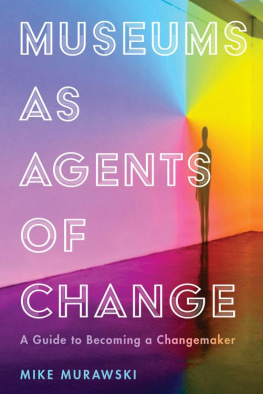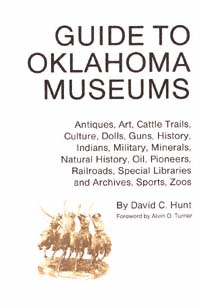| This foreword is intended as a kind of connoisseur's guide to museums in Oklahoma. It describes categories of museums in accordance with their focuses and directs travelers to some of the more noteworthy. It also suggests eight ideas that should enhance the experience of any museum visit. |
| The difficulties inherent in any overview are compounded by the great number and variety of museums in Oklahoma. The number of museums in the state is rapidly expanding; in the last two decades it has doubled. In 1966, for instance, my wife and I were able to visit most of the museums in the state during an eight-day vacation. In 1978, twelve years later, I spent the better part of my first few months as President of the Oklahoma Museums Association visiting museums and managed to see only about half of the total. Since that time I have continued such visits, but still have at least thirty more to see. Although this growth was most marked during the period from 1975 to 1977, the bicentennial years, the trend has not abated. At least two new museums have been established in the few months since this manuscript was completed, and others are in planning. |
| The problem presented in any system of museum classification by the growth in the number of Oklahoma museums is compounded because most do not hold to a rigid limitation on collections. This is especially true of the larger institutions and even more true of art museums; it is often the case with local-history facilities. For example, the Nowata County Historical Museum holds an interesting collection of carvings from Asia, Africa, and the United States, as well as two fine paintings by Robbie Trone, one of Oklahoma's best-known folk artists. |
| Despite these difficulties it is convenient to differentiate among the museums in the state that focus on art, science, and historical and other collections. While this may seem merely a statement of the obvious, it permits further clarifications, as will be seen in the following discussion. Them are many fine art museums in Oklahoma with collections worth visiting. Most of them are broad in nature, but two specialize to a degree: the Oklahoma Museum of Art is oriented particularly to the exhibition of traditional art, while the Oklahoma Art Center is primarily concerned with contemporary art. Both are located in Oklahoma City. |
| Of the remaining art museums, three require special attention: Woolaroc near Bartlesville and the Philbrook Art Center and Thomas Gilcrease Institute of American History and Art, in Tulsa. Woolaroc can be classified as either a historical or an art museum. It contains an impressive array of Indian art in its galleries as well as historical collections. These elements, combined with an extensive park area, blend to create a facility with exciting discoveries for any visitor. |
| The Philbrook is noteworthy for its collections of Renaissance, Indian, and oriental art. Besides permanent exhibits the museum has produced outstanding shows during the past few years and should be watched regularly for such special events. The gardens alone make regular trips them worthwhile. |
| The Gilcrease is of particular interest for two masons. First, its collections represent the largest gathering of historical American art in this part of the United States. Whether one is interested in the works of Remington, Moran, Catlin, or a host of others, them are few places in the country that have better or more complete selections. The Gilcrease also holds large and important collections of Indian materials and Mesoamerican artifacts, in addition to |
|







